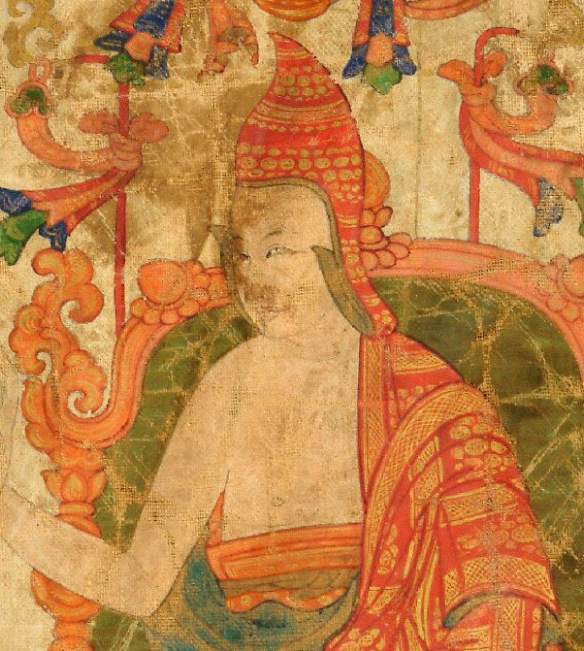Santideva, active 7th century
Enlarge text Shrink text- The path of light ... 1909.
- A guide to the Bodhisattva's way of life, c1979:t.p. (Acharya Shantideva)
- Ācārya Śantidevayā Bodhicaryāvatāra, 1986:t.p. (Ācārya Śāntidevayā) added t.p. (Acharya Shanti Deva)
- Byaṅ chub sems dpaʼi spyod pa la ʼjug pa rtsa ba daṅ ʼgrel ba, 1990:t.p. (Źi-ba-lha) colophon (in Chinese: Chi-tʻien-lun-shih)
- Spyod ʼjng rtsa ʼgrel, 1994:t.p. (Źi-ba-lha) colophon (in Chinese: Hsi-wa-la)
- Byang chub sems pa'i spyod pa la 'jug pa, 1990:t.p. (Zhi ba lha)
- Shanzavyn i︠a︡m i︠u︡u khiĭzh baĭv, 2005:t.p. (Шанзав = Shanzav)
- Wikipedia, Aug. 19, 2011(Shantideva; Sanskrit. :Śāntideva; Mongolian: Шантидева гэгээн = Shantideva gėgėėn; 8th century Indian Buddhist scholar)
Shantideva (Sanskrit: Śāntideva; Chinese: 寂天; Tibetan: ཞི་བ་ལྷ།, THL: Zhiwa Lha; Mongolian: Шантидэва гэгээн; Vietnamese: Tịch Thiên) was an 8th-century CE Indian philosopher, Buddhist monk, poet, and scholar at the mahavihara of Nalanda. He was an adherent of the Mādhyamaka philosophy of Nāgārjuna. Abhayadatta Sri also lists Shantideva as one of the eighty-four mahasiddhas and is known as Bhusuku Pa (布苏固巴). Two works of Shantideva are extant, the Bodhisattvacaryāvatāra and the Śikṣāsamuccaya, both of which were written with the intention of being training manuals for one who intends to follow the path of the bodhisattva. The Bodhisattvacaryāvatāra in particular was the subject of both Indian and Tibetan commentaries during the period it was written and has also received large amounts of attention from both academics and lay practitioners in recent years as well including a commentary written by the 14th Dalai Lama.
Read more on Wikipedia >
 Personality
Personality


.gif)
